NHS Virtual Visit
This service allows ward staff to schedule a visit for a patient. Allowing face to face visits for visitors who are unable to visit in person.
It includes an Administration panel which provides self-service functionality for adding new Trusts, Hospitals, and Wards.
Development
Please read our separate Development Guide.
User flows
Scheduling a visit
- Ward staff makes contact with a visitor of a patient
- A date and time is agreed and the ward staff schedules the visit
- The visitor is sent a text message and/or email notification confirming the date and time of the visit
Starting a visit
- Ward staff can see a list of visits booked for patients on their ward
- At the time of a visit, the ward staff will see a reminder of the visit details
- The ward staff prepares the patient to start the visit
- A text message and/or email notification with a unique link is sent to the visitor to join the visit
- The ward staff waits for the visitor to join, and checks some basic details before handing over to the patient
Joining a visit
- The visitor will receive a text message and/or email with a unique link
- Following the link will prompt the visitor to enter their name
- The visitor confirms the information of the patient with the ward staff
- The visitor can now communicate face to face through the service with the patient
Previews
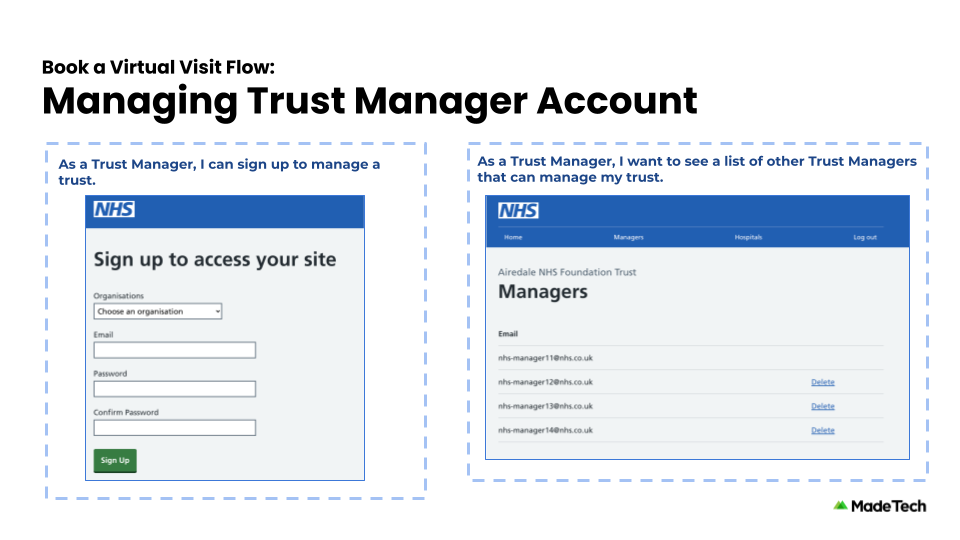 |
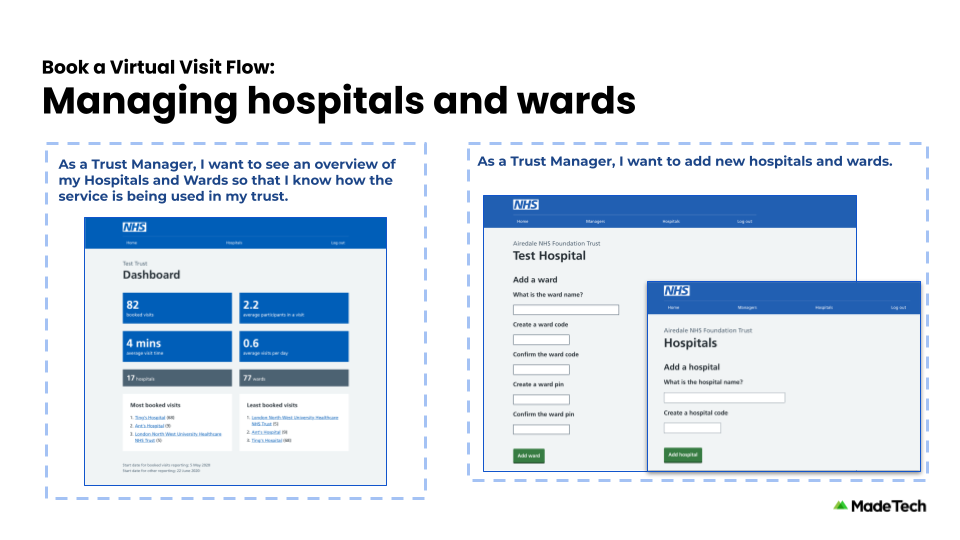 |
|---|---|
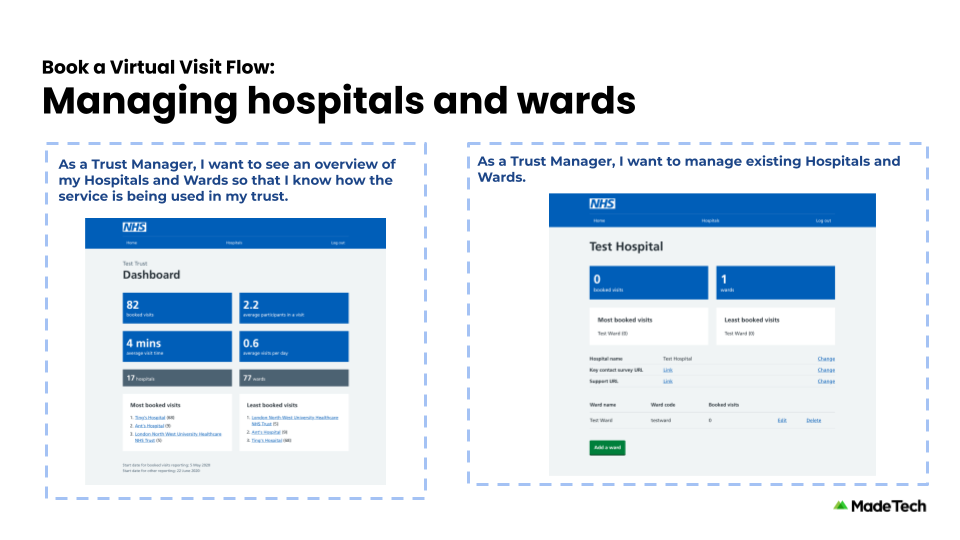 |
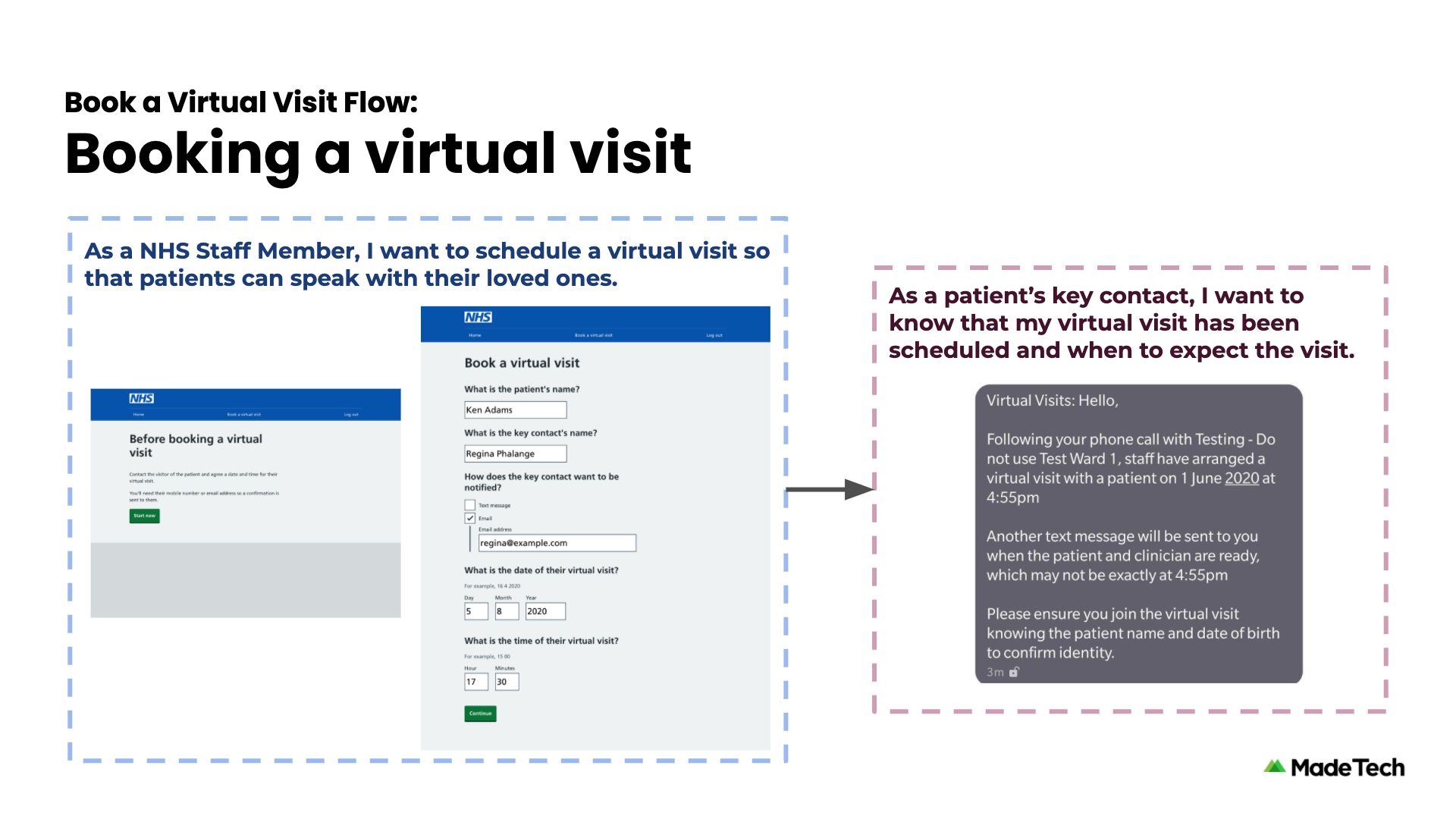 |
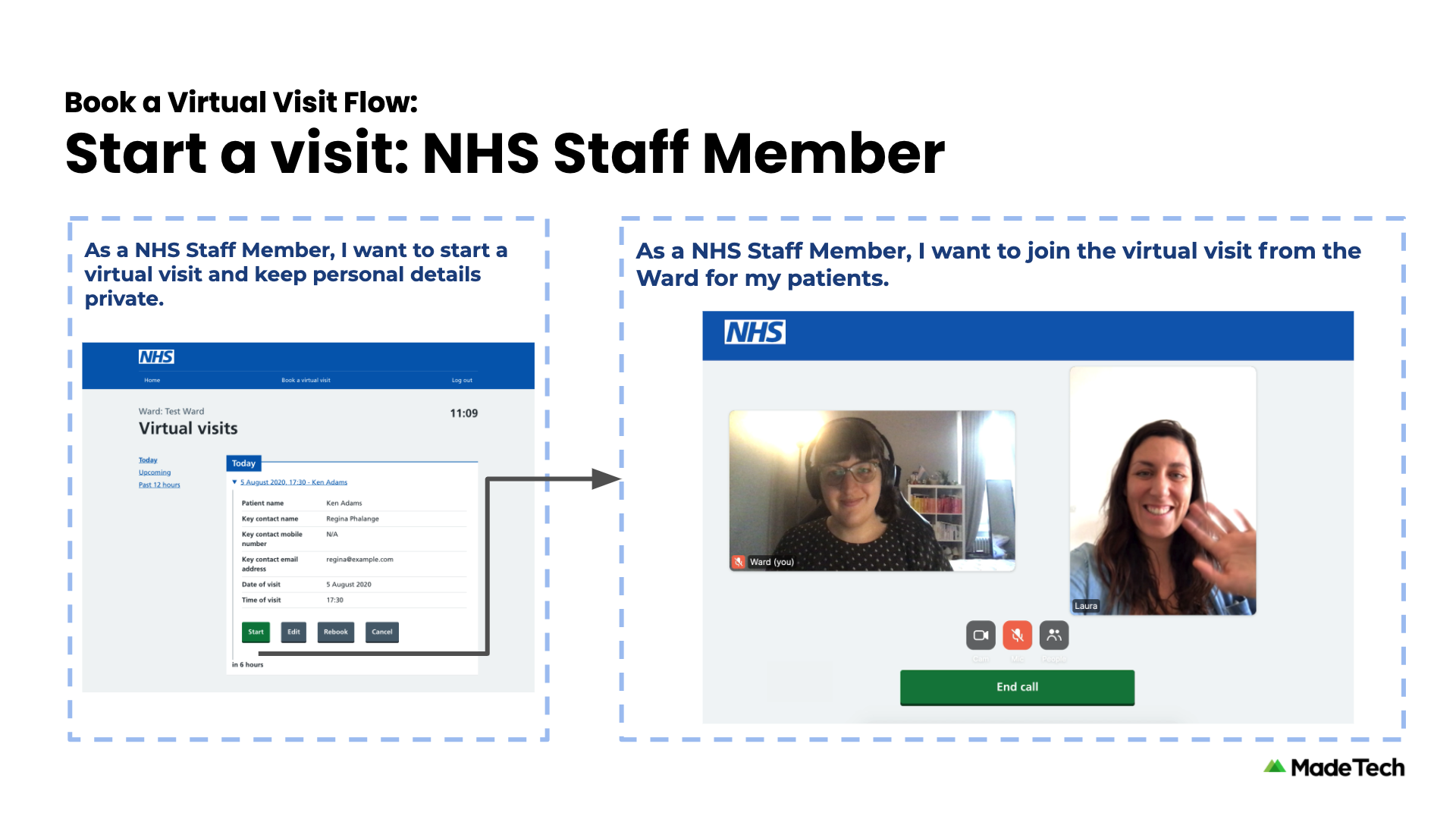 |
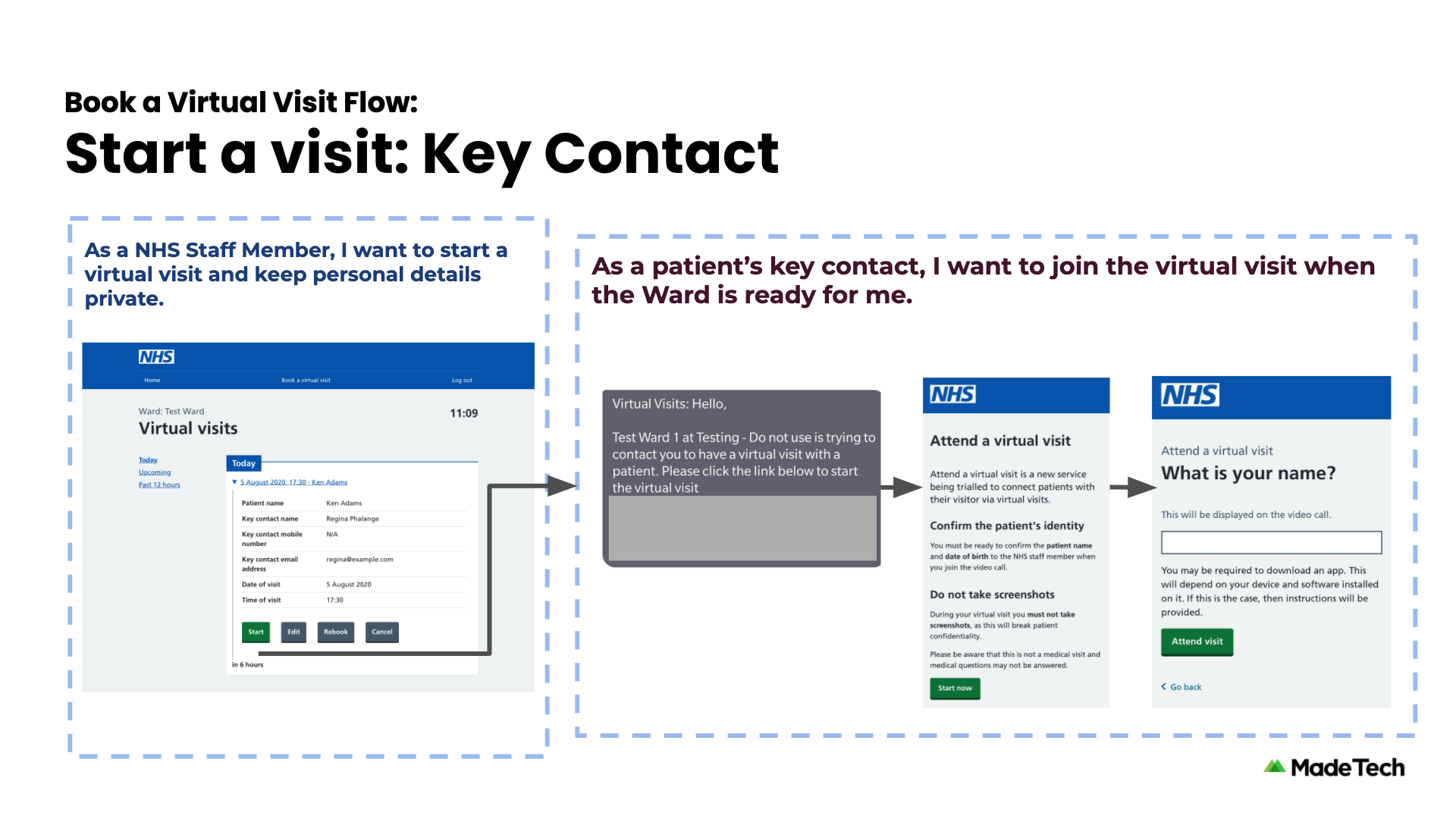 |
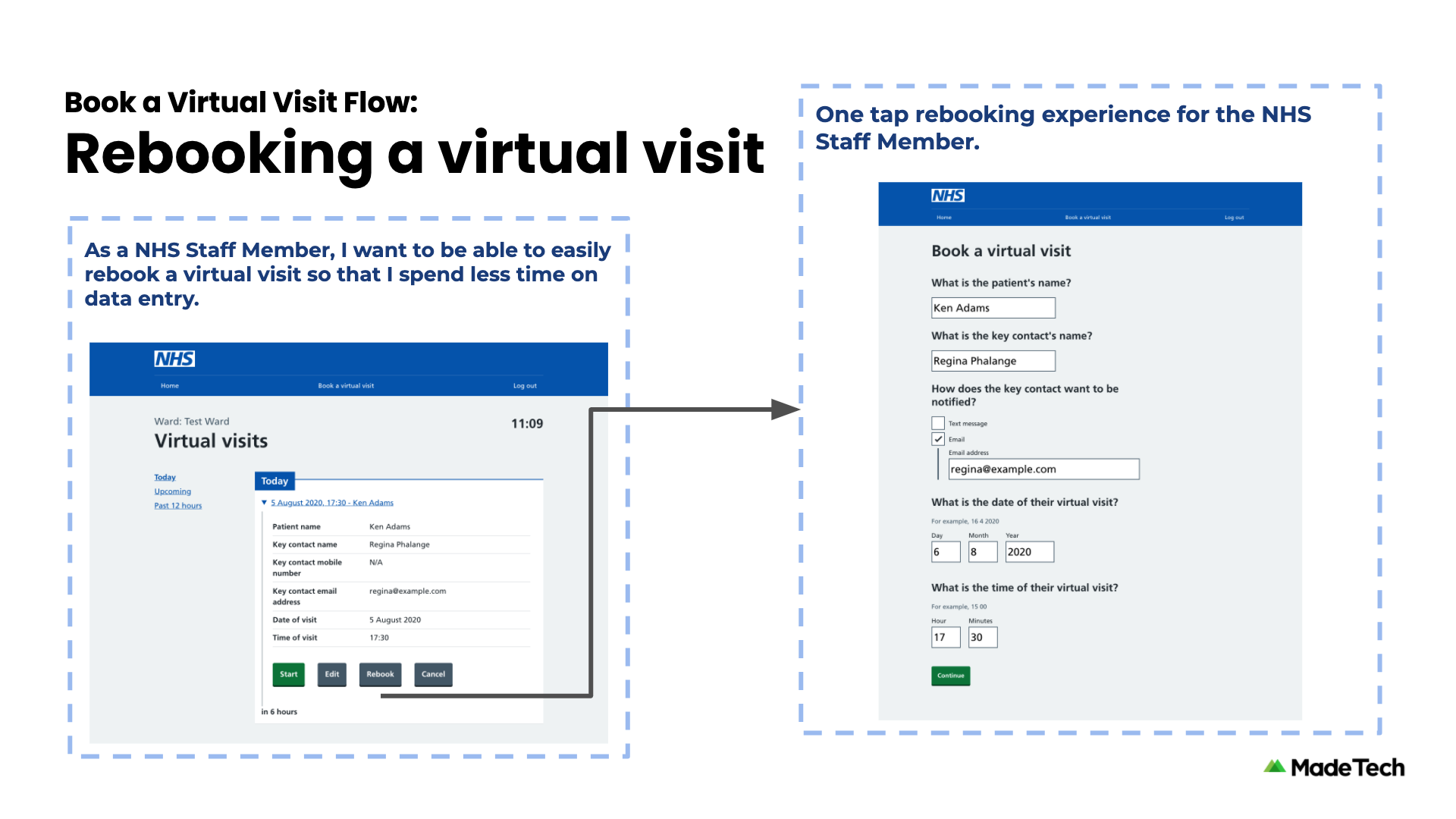 |
Technology
The web application is built using Next.js with Microsoft SQL Server and hosted on Azure.
To notify visitors via text message and/or email, it uses GOV.UK Notify which is used widely by central government, local authorities and the NHS.
To enable video call capabilities, a video provider is used. The following providers are currently supported:
For error monitoring and logging, DataDog and Sentry is used.
Contributing
Please take a look at our separate Contributing Guide.
More documentation
- Runbook - documentation for setting up the service and other tasks.
- Glossary - types of users, vocabulary used in copy and descriptions of the intent for each page.
Contributors
- Luke Morton - CTO at Made Tech (luke@madetech.com)
- Jessica Nichols - Delivery Manager at Made Tech (jessica.nichols@madetech.com)
- Antony O'Neill - Lead Software Engineer at Made Tech (antony.oneill@madetech.com)
- Tom Davies - Senior Software Engineer at Made Tech (tom.davies@madetech.com)
- Jiv Dhaliwal - Senior Software Engineer at Made Tech (jiv.dhaliwal@madetech.com)
- Daniel Burnley - Senior Software Engineer at Made Tech (dan@madetech.com)
- Steve Knight - Senior Software Engineer at Made Tech (steve.knight@madetech.com)
- George Schena - Software Engineer at Made Tech (george@madetech.com)
- Wen Ting Wang - Software Engineer at Made Tech (wenting@madetech.com)
- Joshua-Luke Bevan - Software Engineer at Made Tech (joshua.bevan@madetech.com)
- Stephen Thomson - Senior Software Engineer at Made Tech (stephen.thomson@madetech.com)
- Neil Kidd - Lead Software Engineer at Made Tech (neil.kidd@madetech.com)
- Stu Mackellar - Lead Software Engineer at Made Tech (stu.mackellar@madetech.com)
- Robert Marshall - Senior Software Engineer at Made Tech (robert.marshall@madetech.com)
- Shaun Wild - Software Engineer at Made Tech (shaun.wild@madetech.com)
- Pete Craven - Lead Software Engineer at Made Tech (pete.craven@madetech.com)
- John Nicholas - Senior Software Engineer at Made Tech (john.nicholas@madetech.com)
- Azlina Yeo -Academy Engineer at Made Tech (azlina.yeo@madetech.com)
- Richard Pentecost - Academy Engineer at Made Tech (richard.pentecost@madetech.com)
- Faissal Bensefia - Full Stack Engineer at Made Tech (faissal@madetech.com)
- Miranda Hawkes - Senior Engineer at Made Tech (miranda.hawkes@madetech.com)
- Joe Roberts - Software Engineer at Made Tech (joe.roberts@madetech.com)
- Paulo Lanção - Lead Engineer at Made Tech (paulo.lancao@madetech.com)
- James McDowall - Delivery Manager at Made Tech (james.mcdowall@madetech.com)
- Derek Aning - Junior Delivery Manager at Made Tech (derek.aning@madetech.com)
- David Watkin - Lead Software Engineer at Made Tech (david.watkin@madetech.com)